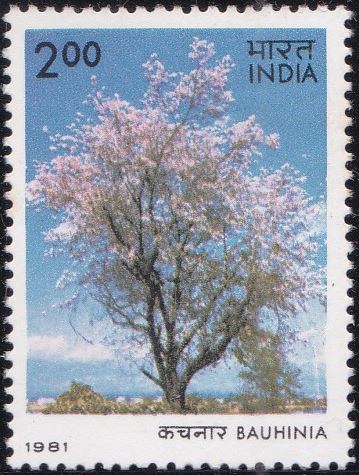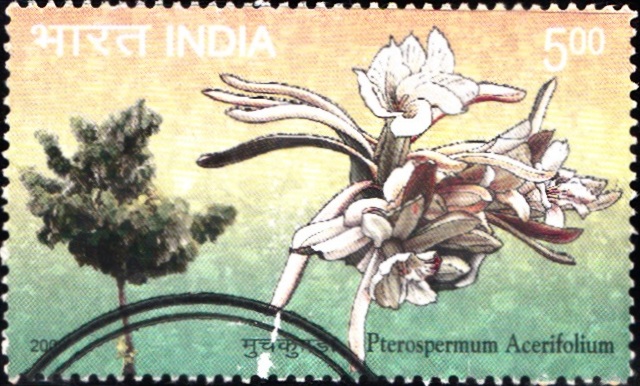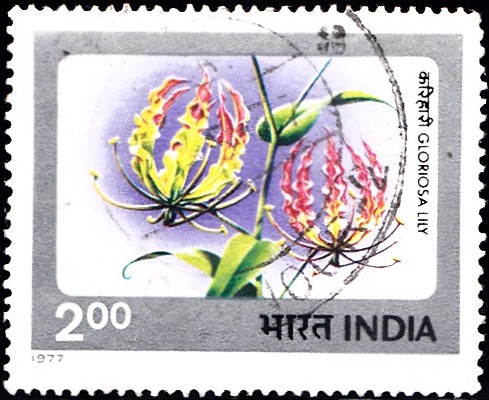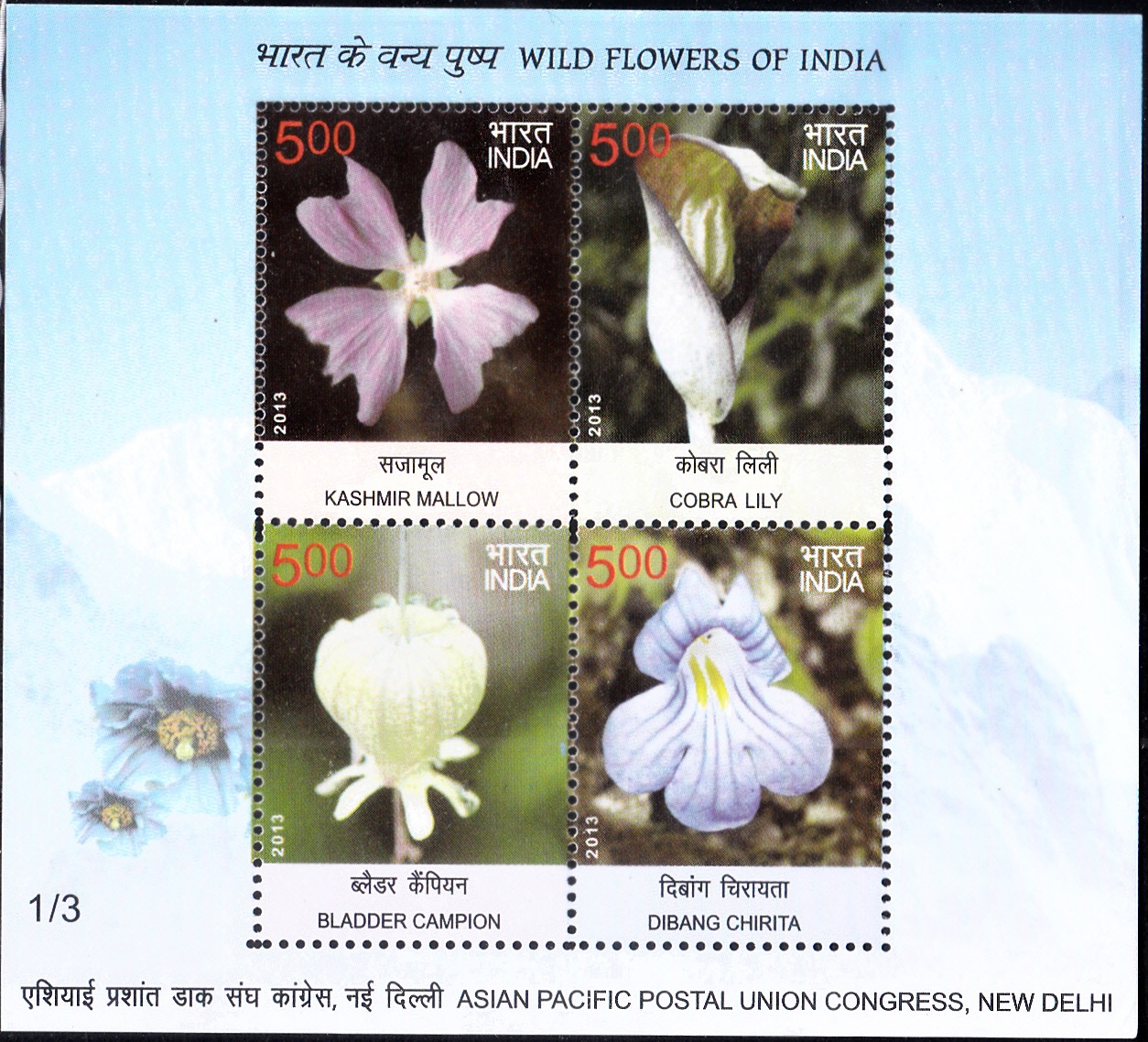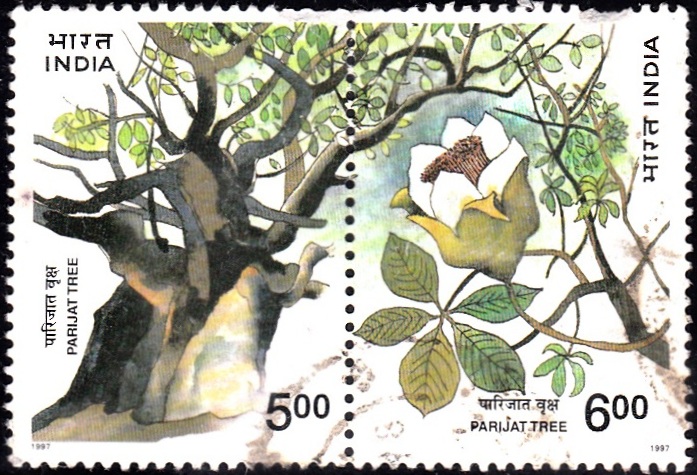
Parijat
Complete Set of 2 nos of postage stamps on the Pariyat tree and flower :
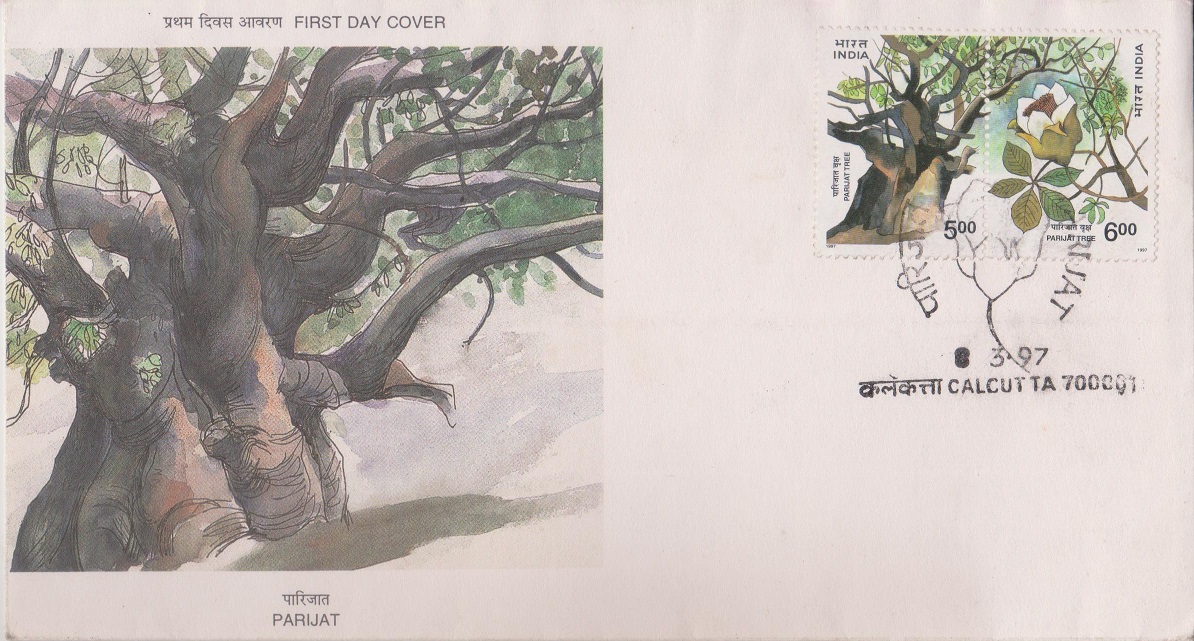 Issued by India
Issued by India
Issued on Mar 8, 1997
Design : Shri R. N. Pasricha has designed the stamp in a setenant by showing the tree on one stamp and the flower on the other. The first day cover is again a painting of the tree, by Shri Pasricha. Cancellation has been designed by Smt. Alka Sharma.
Type : Se–tenant pair of 2 Stamps forming a composite design, Postal Used
Colour : Four
Denomination : 500 & 600 Paise
Overall Size : 3.91 X 5.80 cms.
Printing Size : 3.60 X 5.50 cms.
Perforation : 13.5 x 13.5
Paper : Matt Chromo
Stamps Printed : 0.7 Million
Number per issue sheet : 20
Printing Process : Photo–offset
Printer : Calcutta Security Printer Ltd. Kanpur
About :
- “Parijat” is considered to be a divine tree.
- In the poems of Rabindranath Tagore there are descriptions about the Parijat Flowers.
- Parijat is also known as “Har Singar”, “Sephali”, “Sephalika”, and “Night Jasmine”. It is widely known that the flowers of Parijat blossom in the evening hours only and shed off the next morning. Its branches are rectangular and its flowers are fragrant. The stem of the flower is saffron in colour and the petals are white. The flowers blossom between August to October.
- In India, they grow in the outer Himalayas at the height of 1400 mtrs., and are found in tracts of Jammu & Kashmir, Nepal to East of Assam, Bengal, Tripura extended through the Central region up to Godavari in the South. Besides India, they are found in Thailand, Indonesia, Nepal and Pakistan.
- Apart from contributing to the beauty of gardens, “Parijat” has also got medicinal properties. The juice of its leaves is bitter and saline in taste. Taking its juice is considered to be useful in the treatment of fever. Its bark, if taken as medicine is known to give relief in the swelling of lungs. The oil produced from its bark brings relief to pains the eyes and used for hair tonics. Fresh juice of its leaves mixed with honey provides effective relief in the treatment of chronic fever. The decoction of its leaves prepared over low fire gives relief in the treatment of chronic ‘Sciatica pain’. The juice of its leaves mixed with little sugar is used for treatment of stomach diseases of children. Application of six to seven of its tender leaves with little fresh ginger juice, churned in water, brings relief in case of high fever. Its flowers, though bitter in taste act as appetiser and soothe the stomach. Its seeds are used in the treatment of skin diseases and piles.
Subscribe
Login
0 Comments




